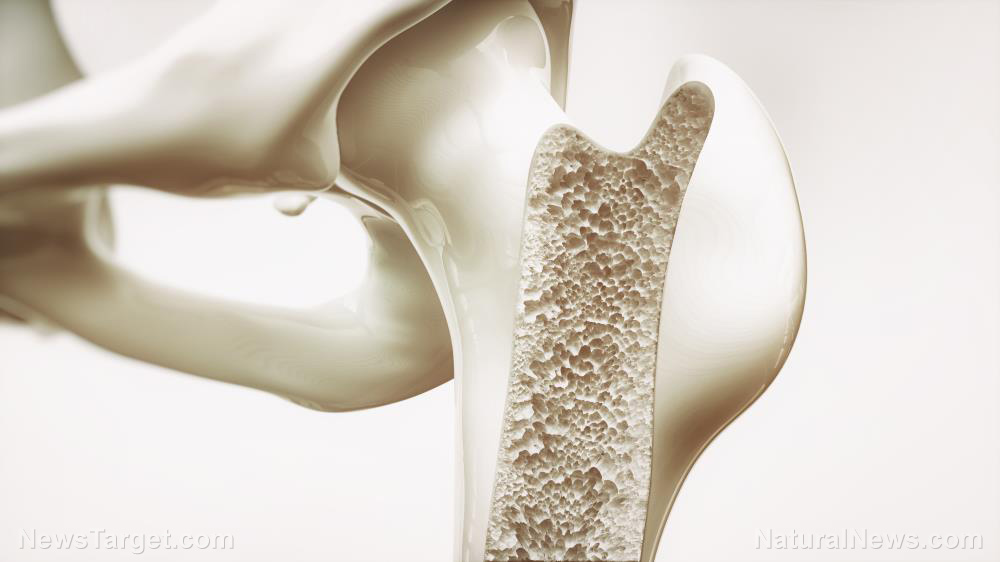Scientists develop a new biomaterial made from citrate to help hasten bone regeneration
02/26/2019 / By Edsel Cook

Broken bones take long periods of time to heal because growing new tissue requires a lot of energy. Researchers from Pennsylvania State University have come up with a way to supercharge the regeneration process: a citrate-based biomaterial that provides stem cells with the energy boost they need.
Citrate is naturally found in bones and citrus fruit. It plays important roles in maintaining normal skeletal health and function, including healing fractures and breaks.
Penn State researchers are working on biodegradable scaffolds that will slowly release citrate into the body. Their biomaterials are expected to accelerate healing by serving as support structures for growing bones. Researcher Jian Yang explained that 90 percent of the citrate in the human body can be found in skeletal tissue. Despite this fact, no one else had considered using the natural compound as a base resource for making bone biomaterials.
His recently-published paper determined the means by which citrate assisted the bone repair process. Yang and his research team used that knowledge to create new biomaterials that mimic biological processes to heal bones. (Related: Which calcium supplement offers the most bioavailability?)
Making synthetic material for bone grafts out of citrate
Conventional bone regeneration usually involves autografting, a process where healthy bone is extracted from a different part of the body and transferred onto the injured part. But this approach cannot be applied to very big fractures nor can it replace bone tissue that was removed in the course of treating bone cancer.

Researchers are working on artificial biomaterials that can serve as an alternative to live bone grafts. However, synthetic grafts suffer from reduced healing rates and inferior healing quality.
An artificial implant will also trigger severe reactions from the immune system in the form of inflammation. Furthermore, it will be surrounded by extremely tough tissues that stop it from grafting onto the bone.
Yang reported that his team’s citrate-based biomaterial avoided the encapsulation response of the body to an unwanted graft. It also triggered much fewer bouts of chronic inflammation.
His doctoral student, Chuying Ma, figured out the means by which the body employed citrate to speed up bone regeneration. In the science paper she authored, Ma discovered the presence of a citrate transporter in the membranes of stem cells.
This aptly-named transporter hauled citrate to the cell. Once there, the organic compound would serve as extra fuel for the cellular processes.
Citrate enables “metabogenic” regulation of stem cells
Bone stem cells use up more energy than usual when they are turning themselves into new bone cells to replace damaged ones. So it is important that the stem cells get the right amount of citrate whenever they need the energy boost.
Yang and Ma called this beneficial effect “metabonegenic regulation.” And citrate is not the only compound involved in the process; an amino acid called phosphoserine also participates in this energy production process.
The Penn State researchers used their newfound knowledge of metabogenic regulation to create a biomaterial with citrate and phospherine. They tested the new graft material on the femoral condyle bone and cranial bone defects of rats. The results showed that the citrate-and-phospherine-based prototype outperformed existing synthetic material when it came to speeding up the formation and maturation of new bone.
“Using our new material, we see the early deposition of new bone at one month,” Ma wrote in the paper. “This is much earlier than the biomaterials widely used in FDA-approved devices.”
Yang added that the metabolic benefits of citrate were not just limited to bone stem cells. The cerebrospinal fluid around the brain contained high levels of citrate, suggesting that it and other similar parts of the body could benefit from metabogenic regulation.
Sources include:
Submit a correction >>
Tagged Under:
biomaterials, biomaterials for wounds, bone graft, bone growth, bone healing, bone health, bone metabolism, bone regeneration, boosting metabolism, cellular energy metabolism, citrate
This article may contain statements that reflect the opinion of the author





















